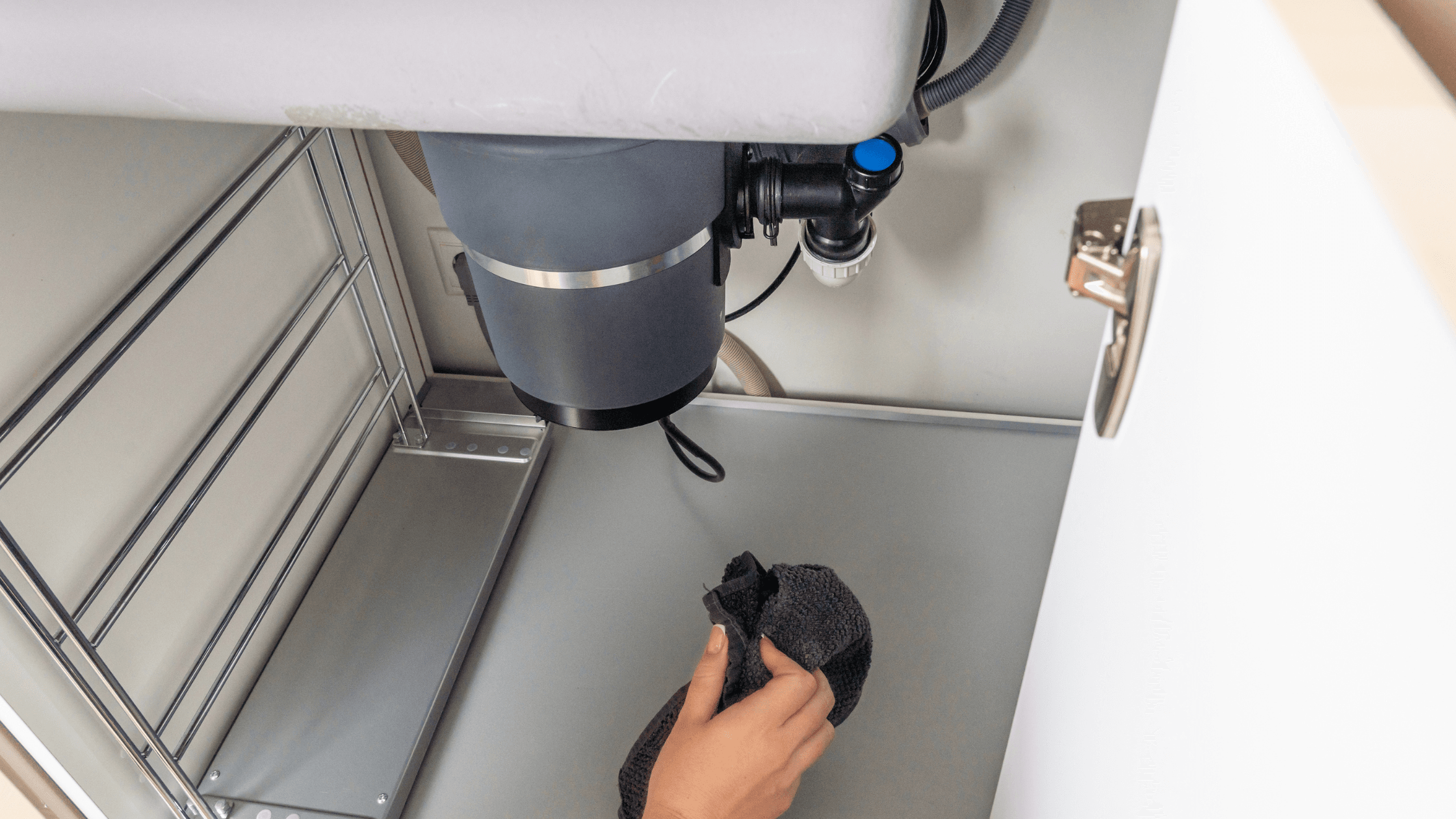What are your ideas on The Handy Guide To Fixing Your Garbage Disposal Leaking?

Garbage disposals are essential cooking area appliances that assist in taking care of food waste efficiently. Nevertheless, a dripping waste disposal unit can be a frustrating and untidy issue to deal with. Thankfully, lots of leaks can be fixed quickly with a couple of basic actions. In this write-up, we will discuss exactly how to take care of a dripping waste disposal unit properly.
Intro
Waste disposal unit are installed under cooking area sinks and are developed to shred food waste into smaller items, enabling it to travel through the pipes system easily. While these tools are generally trustworthy, leakages can take place with time as a result of wear and tear, loose links, or damage to the device.
Typical Sources Of Leakages in Trash Disposals
Worn Seals and Gaskets
Seals and gaskets play a vital role in stopping water from leaking out of the waste disposal unit. Gradually, these parts can weaken, bring about leaks around the disposal device.
Loose Connections
The links in between the waste disposal unit and the plumbing system can come to be loose gradually, triggering water to leak out during operation.
Cracks or Holes in the Disposal Unit
Physical damage to the waste disposal unit, such as cracks or openings in the real estate, can also result in leakages.
Identifying the Source of the Leak
Before trying to repair a dripping waste disposal unit, it is important to identify the source of the leak. This can generally be done through aesthetic inspection or by conducting straightforward tests.
Visual Examination
Check the waste disposal unit system thoroughly for any indicators of water leak. Pay very close attention to areas around seals, gaskets, and connection factors.
Checking for Leakages
One way to evaluate for leakages is by running water with the disposal system and looking for any kind of visible signs of leak.
Tools and Materials Needed for Taking Care Of a Dripping Waste Disposal Unit
Before beginning the repair work procedure, collect the required devices and materials, including a screwdriver, adjustable wrench, plumbing's putty, replacement seals or gaskets, and epoxy or patching product for repairing fractures or openings.
Step-by-Step Guide to Repairing a Leaking Waste Disposal Unit
Shut off the Power
Prior to attempting any repairs, make certain that the power to the garbage disposal device is turned off to stop the risk of electrical shock.
Locate the Leak
Recognize the exact place of the leakage and determine the cause.
Tighten up Connections
Make use of a wrench to tighten up any loose links between the disposal device and the plumbing system.
Change Seals or Gaskets
If the leak is because of used seals or gaskets, remove the old elements and change them with new ones.
Patching Cracks or Holes
For splits or holes in the disposal system, use epoxy or an appropriate patching product to seal the damaged location.
Evaluating the Waste Disposal Unit After Repair
Once the repair service is total, examine the garbage disposal by running water with it to make sure that the leak has actually been settled.
Preventive Maintenance Tips to Prevent Future Leaks
To avoid future leakages, it is important to do regular upkeep on your waste disposal unit. This includes maintaining it clean, staying clear of putting non-food products or hard items down the disposal, and regularly checking for leakages or other issues.
Verdict
To conclude, taking care of a dripping waste disposal unit is a relatively uncomplicated process that can be finished with fundamental tools and products. By following the steps described in this short article and exercising preventive maintenance, you can keep your waste disposal unit in good working condition and stay clear of expensive repair services in the future.
What to Do About a Leaking Garbage Disposal
A leaking garbage disposal often goes unnoticed until you confront a sopping cabinet, a foul-smelling puddle, or an audible drip-drip-drip from the unit. The fix can be frustrating, too, because the leak can stem from a number of components in the system. Fortunately, with a little sleuthing, you can zero in on the leak and—depending on the exact location—stop the icky oozing and repair the component that caused it. Worst case scenario, if it turns out that the garbage disposal must be replaced, installing a new one is a reasonable do-it-yourself task for those with basic plumbing skills. Read on to keep the cash you’d otherwise hand over to a pro.
Prepare to find the leak
Prior to testing the garbage disposal for leaks, unplug it at the wall outlet and turn off the power from the breaker box to prevent electrical shock. Then insert a watertight sink stopper into your sink drain and wipe the unit dry with a clean cloth. In any handy container, mix a few drops of food coloring into a few cups of water, and pour the dyed water onto the sink stopper to help you locate the leak.
Investigate the source
- the top, where the disposal meets the sink drain
- the side, where the dishwasher hose or main drain pipe connects to the disposal
- or the bottom of the unit
Inspect each of these locations while gliding a light-colored rag over the unit; the dyed water will readily show on the rag and reveal the location of the leak. If a leak isn’t immediately apparent, remove the sink stopper and pour a few more cups of dyed water down the sink drain, then check for leaks again. Leaks near the top of the unit are more likely to show themselves while the sink is plugged, while side and bottom leaks are more noticeable while the sink is unplugged.
The metal sink flange that sits directly inside the sink drain is typically sealed around the top with plumber’s putty (a clay-like sealant) and then secured from under the sink with bolts. If the plumber’s putty deteriorates, or the bolts loosen, the flange can no longer form a watertight seal between the sink drain and the disposal—which could cause a leak at the top of the unit.
To reseal the leaky flange, you must first detach the garbage disposal. Start by loosening the screws securing the main drain pipe to the disposal, then loosen the screws in the metal clamp securing the dishwasher hose to the disposal and detach the drain pipe and dishwasher hose from the disposal. Loosen the screws in the mounting ring that connects the disposal to the metal mounting assembly beneath the sink, then pull down the disposal and carefully set it on a clean, dry surface. Loosen the bolts in the mounting assembly with a wrench, then pull down the mounting assembly and set it near the disposal.

Do you like more info about The Handy Guide To Fixing Your Garbage Disposal Leaking? Try to leave a review down below. We'd be pleased to hear your feelings about this content. Hoping that you visit us again later on. Enjoyed reading our posting? Please share it. Help other people find it. Thanks for your time invested reading it.
Request Service
Comments on “Helpful Techniques for Repairing a Dripping Garbage Disposal”